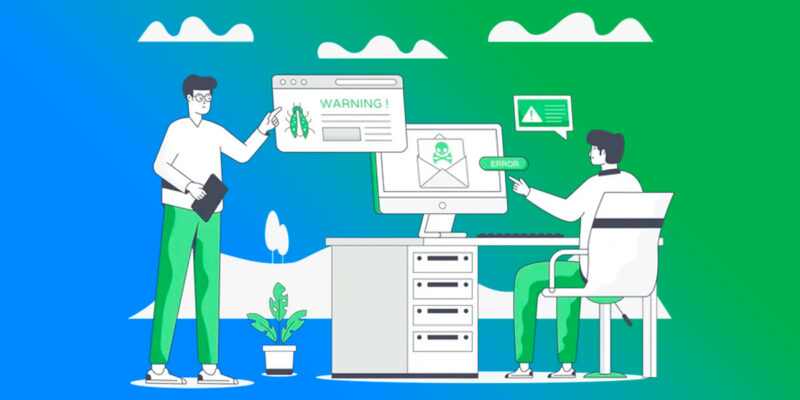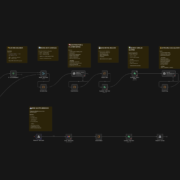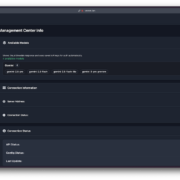The Malware That Changed Everything: Pivotal Attacks in Cybersecurity History
Malware—or malicious software—has transformed from a minor inconvenience to a global threat. Some attacks are so impactful that they’ve shaped cybersecurity as we know it, pushing industries to innovate and adapt. This article explores some of the most pivotal malware incidents, exploring how each “changed everything” uniquely.
Why Malware Matters
Picture this: a single, sneaky piece of software infiltrates an organization, causing millions of dollars in damages and exposing sensitive data. This scenario is not a distant nightmare but a reality that cybersecurity professionals grapple with. According to PIA’s blog post, malware attacks not only disrupt industries but drive evolution in cybersecurity practices, making malware protection, network security, and data safeguards central to business and private practices. Additionally, following best practices like adopting NIST password changes can enhance security by reducing risks associated with outdated password policies, further strengthening digital defenses against evolving threats.
1) The Morris Worm (1988): The Internet’s First Viral Outbreak
In 1988, the Morris Worm crawled its way through the early internet, marking the first large-scale malware outbreak. Created by a graduate student named Robert Tappan Morris, this worm spread rapidly, affecting about 10% of the internet, which back then comprised only a few thousand machines.
Why It Mattered: The Morris Worm revealed how interconnected systems could spread malicious software unintentionally, overwhelming networked systems. It was a pivotal event that spurred the development of early cybersecurity protocols and led to the first-ever conviction under the U.S. Computer Fraud and Abuse Act.
This worm showed the world why network security is essential for connected systems. It’s the reason we have firewalls and system monitoring tools in place today.
2) ILOVEYOU Virus (2000): The Power of Human Curiosity
Imagine receiving an email that simply reads, “I love you.” Intrigued, millions of users worldwide opened the message, unknowingly releasing the ILOVEYOU virus into their systems. This virus spread through email, infecting millions of computers within hours and causing billions of dollars in damages globally.
Why It Mattered: The ILOVEYOU virus was one of the first to exploit human curiosity and trust, showing that social engineering—a tactic that manipulates users rather than technical systems—could be a powerful way to spread malware.
This attack highlighted the need for email security and user awareness training. As a result, companies began educating employees on the risks of email-based threats and built stricter spam and malware filters.
3) Code Red (2001): When Websites Became Targets
The Code Red worm targeted websites in 2001, exploiting a vulnerability in Microsoft Internet Information Services (IIS) software. This malware attack was so widespread that it infected over 350,000 servers in just 14 hours, overwhelming sites and making them inaccessible.
Why It Mattered: Code Red introduced a new kind of threat, demonstrating that entire websites could be brought down by malware that overloaded servers. This attack urged companies and governments to prioritize regular software updates, or “patches,” as a means of defense.
Code Red was a wake-up call for organizations to maintain up-to-date systems, leading to the concept of “patching” vulnerabilities before attackers could exploit them.
4) Mydoom (2004): The Fast-Spreading Email Worm
In 2004, the Mydoom worm spread like wildfire through email, breaking records as the fastest-spreading email worm to date. Within hours, Mydoom had infected millions of computers worldwide, slowing down global internet traffic and targeting specific companies with Distributed Denial of Service (DDoS) attacks.
Why It Mattered: Mydoom highlighted how emails, one of the most essential communication tools, could also be one of the highest-risk entry points for malware. This attack emphasized the need for spam filters, antivirus tools, and heightened email security practices.
Mydoom showed the importance of email security measures that we still rely on today, such as advanced spam filtering, antivirus scanning, and employee training on phishing awareness.
5) Stuxnet (2010): The Malware with Physical Impact
Stuxnet was unlike any malware seen before. It didn’t just target computers; it infiltrated physical machinery at Iran’s nuclear facilities, causing actual, tangible destruction. Stuxnet’s sophisticated design is believed to have been a state-sponsored attack, making it the first-known malware with a physical impact on infrastructure.
Why It Mattered: Stuxnet revealed the dangers of cyber attacks targeting critical infrastructure, including power plants, water treatment facilities, and other essential services. It led to a new focus on securing industrial control systems (ICS) and critical infrastructure.
Stuxnet transformed cybersecurity by highlighting the need for specialized infrastructure defenses. It led to the development of industrial cybersecurity protocols to protect physical systems.
6) WannaCry (2017): Ransomware Hits Healthcare
WannaCry took the world by storm in 2017, particularly affecting healthcare systems worldwide. This ransomware encrypted files on infected computers and demanded ransom payments in Bitcoin. Hospitals in particular, were hit hard, with staff unable to access patient records, demonstrating the real-world impact of ransomware on essential services.
Why It Mattered: WannaCry showed that ransomware wasn’t just a digital nuisance; it could disrupt essential services, endanger lives, and lead to massive financial losses. The attack emphasized the need for swift software updates and regular data backups.
WannaCry raised awareness about the need for rapid response to vulnerabilities and underscored the importance of backing up critical data in secure locations.
7) NotPetya (2017): The Trojan Horse of Cyber Attacks
NotPetya first appeared as ransomware, but it was soon revealed to be a “wiper” attack, aiming to destroy data rather than demand ransom. It spread through a software update in widely used accounting software, affecting companies across the globe and costing billions in damages.
Why It Mattered: NotPetya wasn’t just financially devastating; it showed the risks of supply chain vulnerabilities. The malware exploited a trusted software provider to access target networks, leading to greater scrutiny of third-party software and partnerships.
This incident reinforced the importance of supply chain security and the need to evaluate the security of software vendors and partners.
Conclusion:
Each of these malware attacks changed cybersecurity in lasting ways. From the Morris Worm, which highlighted the need for network security, to NotPetya, which exposed the risks of supply chain vulnerabilities, these incidents continue to inform cybersecurity practices. Today, malware has become more sophisticated, often involving artificial intelligence and targeting diverse platforms.
Staying Safe in a Digital World: The good news is that while malware continues to evolve, so do our defenses. Basic security habits—like updating software, using antivirus programs, and backing up data—remain some of the best ways to protect ourselves.










